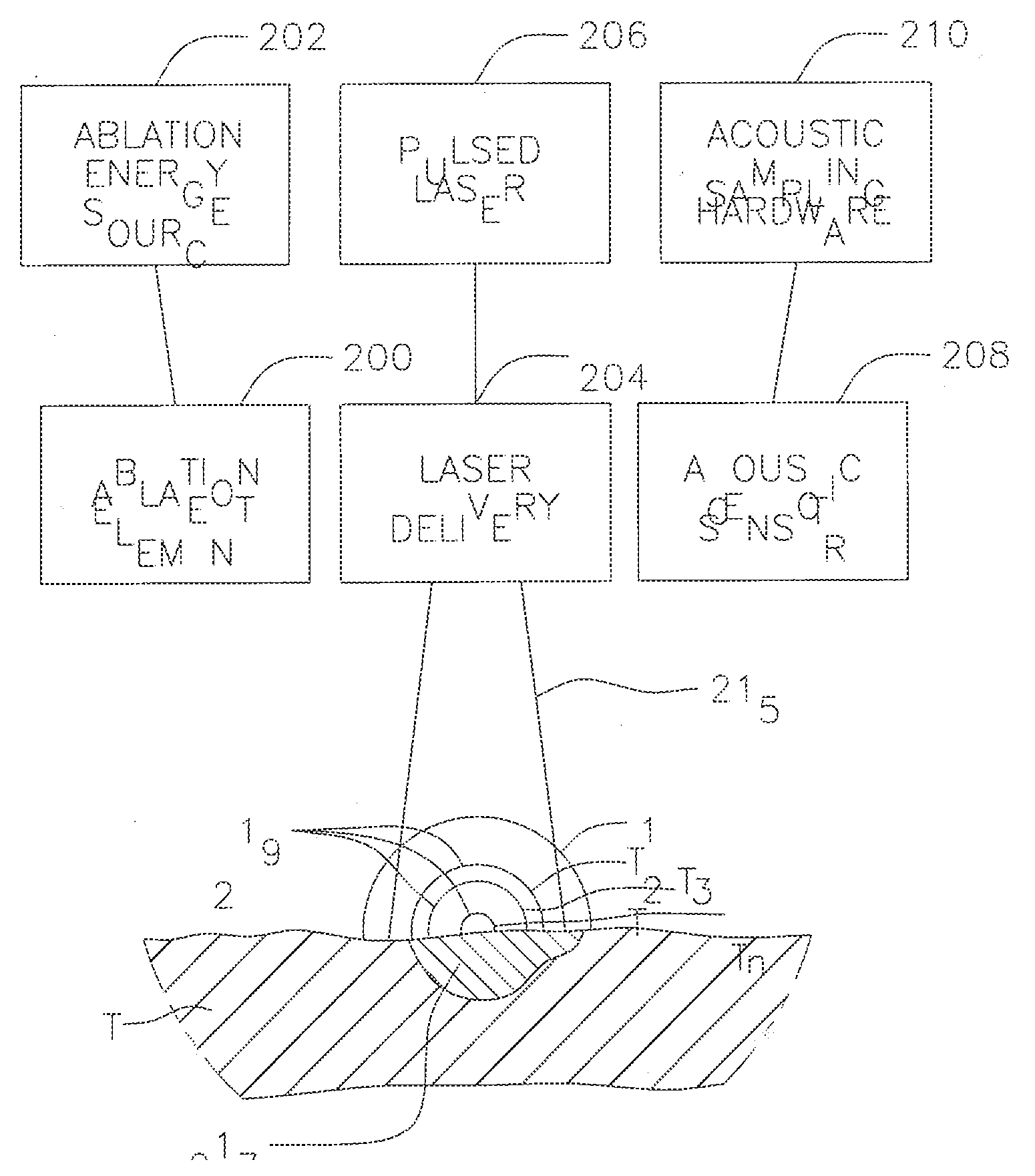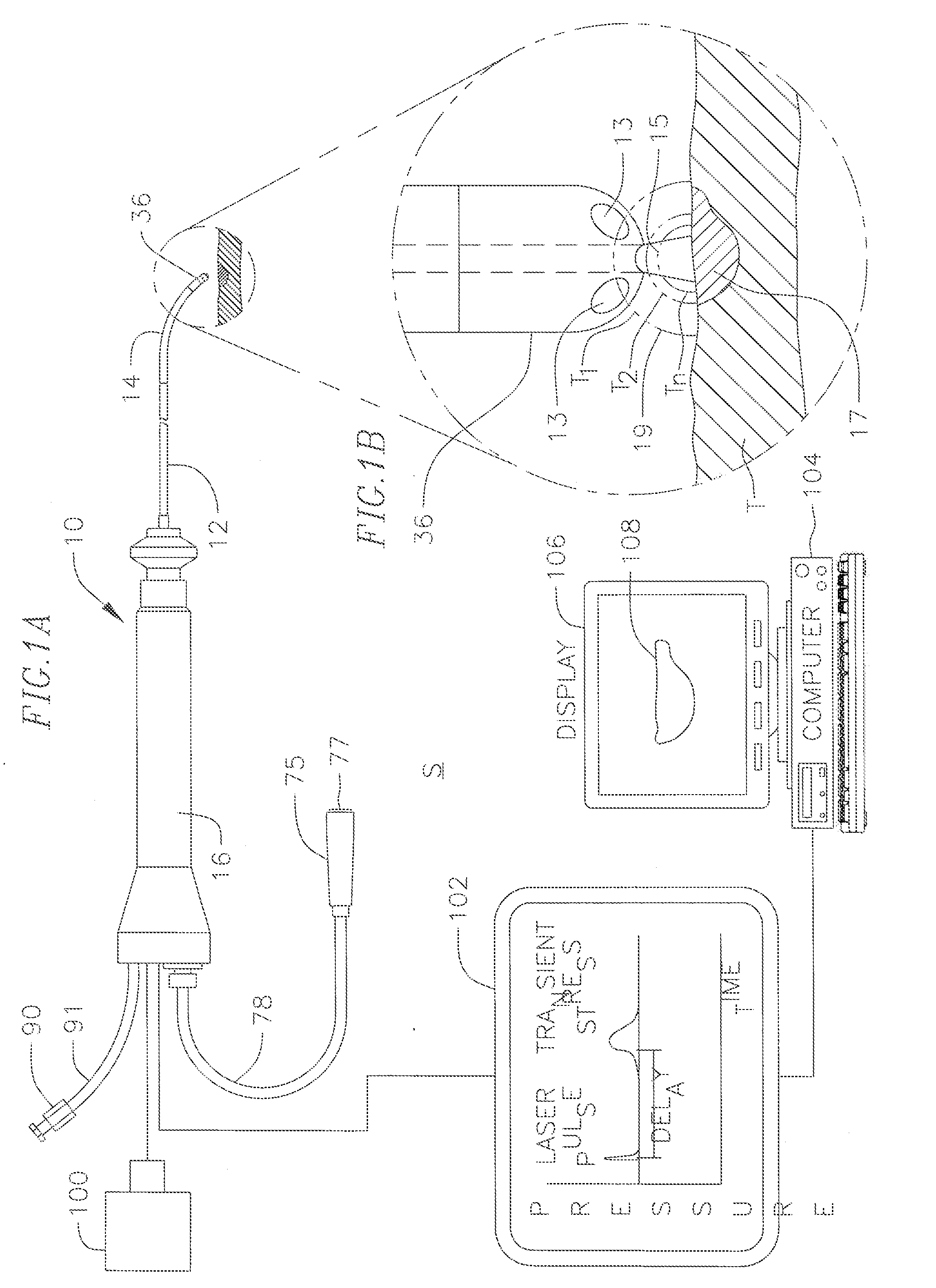Real-time optoacoustic monitoring with electophysiologic catheters
a technology of electophysiologic catheters and optoacoustic monitoring, which is applied in the field of electrophysiologic catheters, can solve the problems of inability to obtain real-time information regarding the condition of the treatment site within the body, inability to provide information to the clinician, and irregular heart beating, etc., and achieves a high resolution and greater sensitivity to materials
- Summary
- Abstract
- Description
- Claims
- Application Information
AI Technical Summary
Benefits of technology
Problems solved by technology
Method used
Image
Examples
Embodiment Construction
[0033]FIG. 1 illustrates an embodiment of a system S for laser optoacoustic monitoring to provide real time assessment of lesion formation, tissue status, and tissue morphology. Tissue T is subjected to RF ablation by an ablation element 200 that is energized by an ablation energy source 202 to form lesion 217. A laser delivery means 204 irradiates the lesion 217 and surrounding tissue within its field of view 215 to stimulate pressure waves 219 (with different delay times T1, T2. Tn) which are detected by acoustic transducers 208 for imaging the lesion against the surrounding tissue. The laser delivery means can include a fiber optic cable housed in a catheter that is equipped solely or primarily for irradiation, or an integrated catheter as described further below. As understood by one of ordinary skill in the art, the imaging provided by the present invention is based on contrast provided by differential absorption. To that end, a pulsed laser light source 206 drives the laser de...
PUM
 Login to View More
Login to View More Abstract
Description
Claims
Application Information
 Login to View More
Login to View More - R&D
- Intellectual Property
- Life Sciences
- Materials
- Tech Scout
- Unparalleled Data Quality
- Higher Quality Content
- 60% Fewer Hallucinations
Browse by: Latest US Patents, China's latest patents, Technical Efficacy Thesaurus, Application Domain, Technology Topic, Popular Technical Reports.
© 2025 PatSnap. All rights reserved.Legal|Privacy policy|Modern Slavery Act Transparency Statement|Sitemap|About US| Contact US: help@patsnap.com



